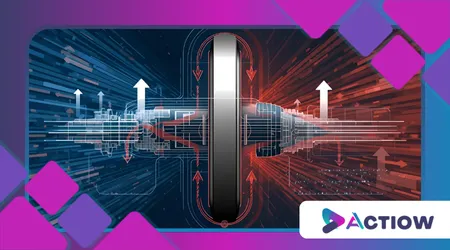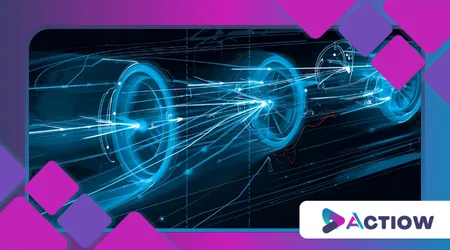What Is Torque Vectoring and Why It Matters in EVs
Anúncios
What Is Torque Vectoring and Why It Matters in EVs!
In the rapidly evolving world of electric vehicles (EVs), technologies that enhance performance and safety are gaining traction.
Torque vectoring stands out as a game-changer, allowing EVs to distribute power intelligently across wheels for superior handling.
Anúncios
This innovation not only boosts driving dynamics but also addresses unique challenges in battery-powered cars, making it essential for modern mobility.

What Is Torque Vectoring and Why It Matters in EVs: Summary of Topics Covered
- What Is Torque Vectoring?
- How Does Torque Vectoring Work in EVs?
- What Are the Advantages of Torque Vectoring in Electric Vehicles?
- Why Does Torque Vectoring Matter for EV Safety and Efficiency?
- What Are Real-World Examples of Torque Vectoring in EVs?
- How Does Torque Vectoring Compare to Traditional Systems?
- Frequently Asked Questions
++ Curiosities and Automotive History
What Is Torque Vectoring?

Torque vectoring refers to a sophisticated system that dynamically adjusts the amount of torque delivered to each wheel of a vehicle.
In essence, it allows for precise control over how power is distributed, enabling the car to respond more effectively to driving conditions.
Unlike basic traction control, which merely brakes slipping wheels, torque vectoring actively reallocates power to optimize grip and stability.
This technology has roots in motorsports but has found a natural home in EVs due to their electric motors’ instantaneous response.
++ The Rise of Subscription-Based Vehicle Maintenance: Worth It?
Moreover, torque vectoring operates through electronic differentials or multiple motors, making it particularly suited for electric drivetrains.
For instance, in an EV with dual or quad motors, the system can independently modulate torque to the left and right wheels on an axle.
This creates a yaw effect, helping the vehicle rotate smoothly around corners without relying solely on steering input.
Consequently, drivers experience a more intuitive and engaging ride, as the car seems to anticipate their intentions.
Furthermore, the core principle behind torque vectoring is to mitigate understeer or oversteer—common issues where the front or rear tires lose traction during turns.
By channeling more torque to the outer wheels in a curve, the system pushes the vehicle through the bend with greater precision.
However, it’s not just about speed; this technology also enhances everyday driving by improving maneuverability in tight spaces or on uneven surfaces.
In summary, torque vectoring transforms passive power delivery into an active, intelligent process that elevates the overall vehicle dynamics.
How Does Torque Vectoring Work in EVs?
Torque vectoring in EVs functions by leveraging the inherent advantages of electric motors, which provide instant torque without the lag of internal combustion engines.
The process begins with sensors monitoring variables like wheel speed, steering angle, and lateral acceleration.
++ EV Charging Networks Compared: Tesla Supercharger vs. Electrify America
Based on this data, an onboard computer calculates the optimal torque split and adjusts it in real-time.
For example, during a sharp turn, the system might increase torque to the outer rear wheel while reducing it to the inner one, creating a rotational force that aids cornering.
Additionally, in multi-motor EVs, each wheel can be powered by its own electric motor, allowing for granular control.
This setup eliminates the need for mechanical differentials, which are often bulky and less efficient.
Instead, software algorithms handle the distribution, responding in milliseconds to changing conditions.
Therefore, EVs equipped with this technology can achieve seamless transitions between straight-line acceleration and agile handling, making them versatile for various terrains.
Nevertheless, the integration of torque vectoring requires sophisticated calibration to avoid over-correction, which could lead to instability.
Engineers fine-tune these systems through simulations and real-world testing, ensuring they complement other features like regenerative braking.
In contrast to traditional vehicles, where torque vectoring might rely on clutches or brakes, EVs benefit from purely electronic control, reducing wear and enhancing longevity.
As a result, this mechanism not only improves performance but also contributes to the vehicle’s overall energy management.
What Are the Advantages of Torque Vectoring in Electric Vehicles?
One key advantage of torque vectoring in EVs is enhanced cornering performance, which directly translates to a more enjoyable driving experience.
By intelligently distributing torque, the system minimizes tire slip and maximizes grip, allowing drivers to tackle curves at higher speeds with confidence.
Moreover, this leads to reduced lap times on tracks, appealing to enthusiasts who push their vehicles to the limit.
However, even for daily commuters, it means smoother navigation through winding roads or urban traffic.
Another benefit lies in improved energy efficiency, as torque vectoring optimizes power usage by directing it only where needed.
This prevents wasteful spinning of wheels and extends battery range, a critical factor in EVs.
For instance, during acceleration on slippery surfaces, the system ensures torque is applied to wheels with the best traction, conserving energy that might otherwise be lost to friction.
Consequently, manufacturers can design lighter, more aerodynamic vehicles without sacrificing stability.
Furthermore, torque vectoring enhances vehicle safety by actively countering potential loss of control.
In emergency maneuvers, such as swerving to avoid obstacles, the technology stabilizes the car by adjusting torque splits instantaneously.
This proactive approach reduces the reliance on passive safety features like airbags, potentially preventing accidents altogether.
In addition, it integrates well with advanced driver-assistance systems (ADAS), creating a layered defense against road hazards.
Overall, these advantages position torque vectoring as a cornerstone for future EV designs, blending thrill with practicality.
Why Does Torque Vectoring Matter for EV Safety and Efficiency?
Torque vectoring matters profoundly for EV safety because it addresses the unique weight distribution and instant power delivery of electric cars.
EVs often have heavy battery packs low in the chassis, lowering the center of gravity but sometimes leading to unpredictable handling under load.
By vectoring torque, the system compensates for these traits, ensuring consistent traction even in adverse weather.
Therefore, drivers feel more secure, knowing the vehicle can adapt to sudden changes like hydroplaning or ice patches.
In terms of efficiency, torque vectoring optimizes regenerative braking by coordinating torque across wheels, capturing more kinetic energy during deceleration.
This not only boosts range but also reduces brake wear, extending component life.
Moreover, as EVs transition to autonomous driving, this technology provides the precise control needed for safe navigation in complex environments.
However, without it, EVs might struggle with the same handling limitations as their gasoline counterparts, limiting their appeal.
Additionally, consider the broader implications for sustainability: by enhancing efficiency, torque vectoring indirectly lowers the environmental footprint of EVs through better resource utilization.
Already, studies show that vehicles with this feature can achieve up to 10-15% better energy recovery in urban cycles.
Nevertheless, its importance extends to performance metrics, where it enables EVs to outperform traditional sports cars in agility.
Why settle for basic traction when torque vectoring can turn an EV into a precision instrument on the road?
What Are Real-World Examples of Torque Vectoring in EVs?
Imagine navigating a rain-slicked mountain pass in an EV equipped with torque vectoring.
As you approach a hairpin turn, the system detects the inner wheels losing grip due to water accumulation.
Instantly, it shifts more torque to the outer wheels, creating a subtle yaw that guides the car through the bend without drama.
This original scenario highlights how torque vectoring turns potential hazards into manageable drives, allowing the driver to maintain speed and control where a standard EV might fishtail.
In another original example, picture an urban delivery EV weaving through congested city streets during rush hour.
When merging into a tight lane, the torque vectoring system apportions power to the front outer wheel, facilitating a crisp pivot that avoids clipping curbs or other vehicles.
This precision not only speeds up deliveries but also minimizes wear on tires and suspension.
Consequently, fleet operators see reduced maintenance costs, making EVs more viable for commercial use.
Furthermore, real-world data underscores these benefits; according to market analysis, the global torque vectoring market is projected to grow from USD 11.1 billion in 2025 to USD 42.3 billion by 2034, reflecting a compound annual growth rate (CAGR) of 16.0%.
This statistic illustrates the technology’s rising adoption in EVs, driven by demands for better handling.
To put it in perspective, think of torque vectoring like a skilled conductor leading an orchestra—each wheel is an instrument, and the system ensures harmonious performance, preventing discord in motion.
How Does Torque Vectoring Compare to Traditional Systems?
Torque vectoring in EVs surpasses traditional mechanical differentials found in internal combustion engine (ICE) vehicles by offering electronic precision without moving parts.
In ICE cars, systems like limited-slip differentials rely on clutches that engage under load, but they can’t match the speed of electric motors.
Therefore, EVs with torque vectoring respond faster, providing seamless adjustments that feel almost predictive.
Moreover, while traditional systems often add weight and complexity, EV implementations leverage existing motors, keeping designs sleek.
This leads to better weight distribution and lower inertia, enhancing overall responsiveness.
However, traditional setups excel in off-road scenarios where mechanical locking provides brute force traction, something EVs are still refining.
In contrast, the analogy of torque vectoring to a figure skater adjusting arm positions for spins captures its elegance—subtle shifts create powerful effects.
Traditional systems, by comparison, are like a lumbering dancer, effective but less graceful.
As EVs evolve, this comparison highlights why torque vectoring is pivotal for bridging performance gaps.
| Feature | Torque Vectoring in EVs | Traditional Systems in ICE Vehicles |
|---|---|---|
| Response Time | Milliseconds via electronics | Seconds via mechanical engagement |
| Efficiency Impact | Improves range by 10-15% through optimized power | Often reduces fuel efficiency due to drag |
| Complexity | Software-based, minimal hardware | Mechanical parts prone to wear |
| Safety Enhancement | Active yaw control prevents skids | Reactive braking after slip detection |
What Is Torque Vectoring and Why It Matters in EVs: Frequently Asked Questions
Have you ever wondered why some EVs hug corners like they’re on rails?
That’s torque vectoring at work, but questions abound. Below is a table addressing common doubts.
| Question | Answer |
|---|---|
| What is the main difference between torque vectoring and traction control? | Torque vectoring actively distributes power to enhance handling, while traction control primarily brakes slipping wheels to regain grip. Additionally, vectoring is proactive, making it more advanced for dynamic driving. |
| Does torque vectoring drain EV battery faster? | No, it actually improves efficiency by optimizing torque delivery, potentially extending range. However, aggressive use in performance modes might increase consumption slightly. |
| Which EVs commonly feature torque vectoring? | Models like the Porsche Taycan and Audi e-tron GT incorporate it standardly. Moreover, upcoming vehicles from Tesla and Rivian are integrating advanced versions for better off-road capabilities. |
| Is torque vectoring only for high-performance EVs? | While prominent in sports models, it’s increasingly appearing in everyday EVs for safety. Therefore, even family-oriented vehicles benefit from its stability features. |
| How does maintenance differ for torque vectoring systems? | Being mostly software-driven in EVs, it requires fewer physical checks than mechanical differentials. Nevertheless, regular software updates ensure optimal performance. |
In conclusion, torque vectoring isn’t just a buzzword—it’s a transformative force in EVs, blending safety, efficiency, and excitement.
As the industry advances, expect even more innovations building on this foundation.
For further reading:
